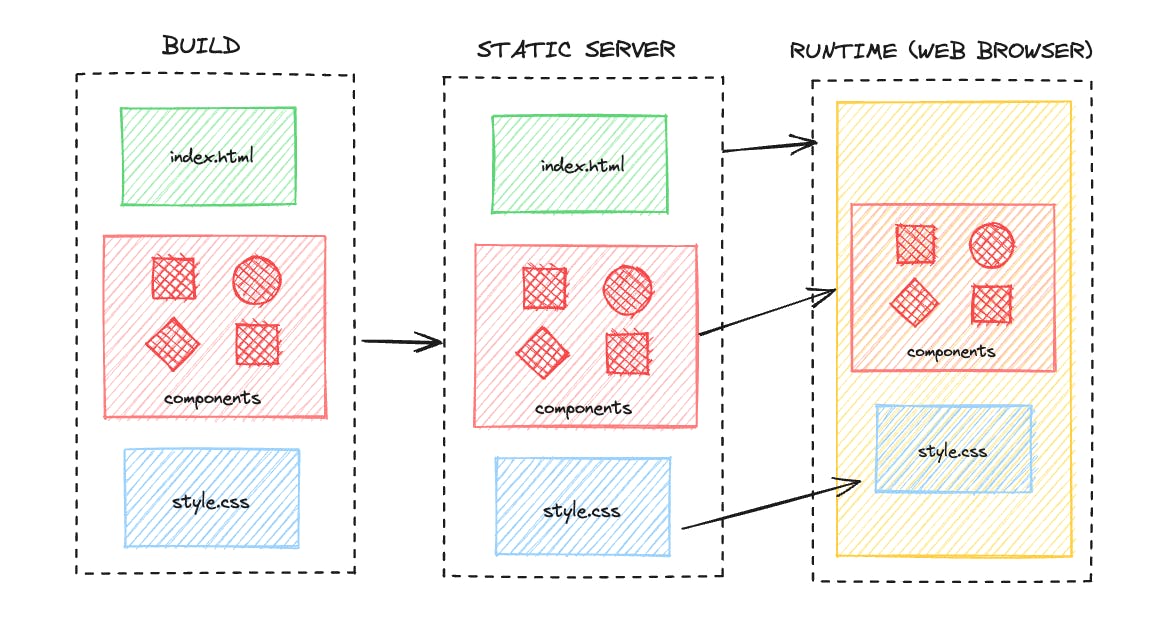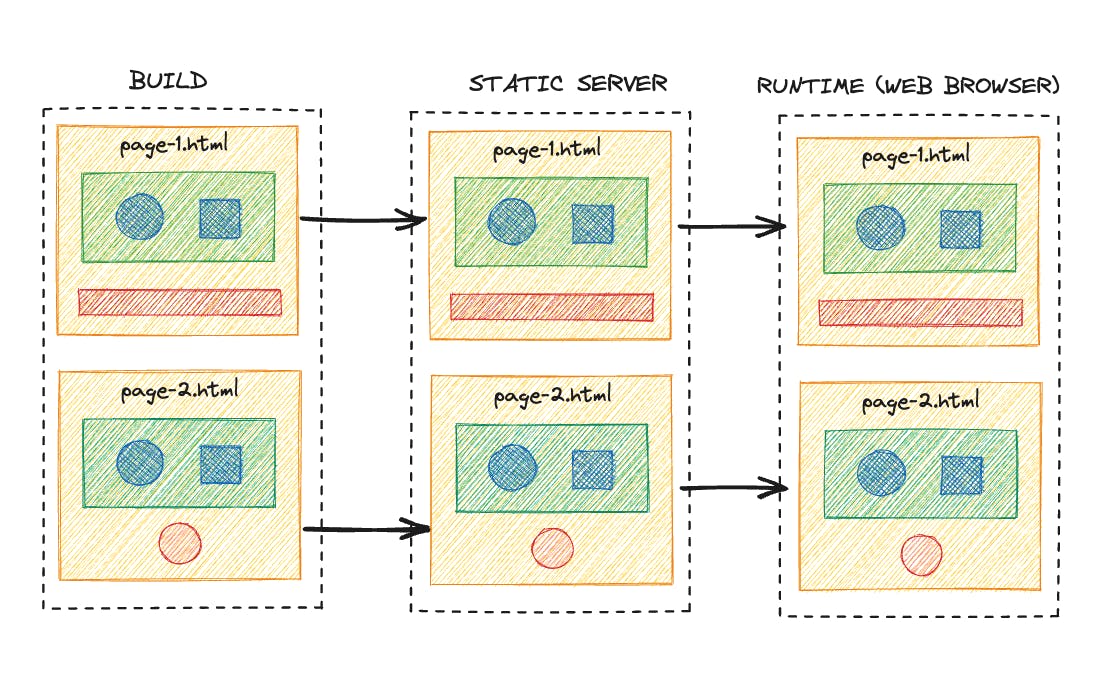Client Side Rendering, Server Side Rendering, Static Site Generation
A Simple Explanation of Web Rendering Strategies
Introduction
In this post, I'll explain the different web rendering strategies, how they work, and which one to choose.
🖥️ Client Side Rendering (CSR)
It's the default rendering strategy in React applications. Here, pages get built directly in the browser using JavaScript.
All logic, data fetching, templating, and routing are handled on the client, not on the server.

Pros
Fast changes: User sees updates instantly.
Less server work: Server just sends JavaScript, and the browser does the rest.
Cons
Slow at first load: Browser has to download and run JavaScript first.
Bad for SEO: Search engines can't understand JavaScript pages well.
Needs a good device: Old or slow devices might experience delays or other performance issues.
🌐 Server Side Rendering (SSR)
It's when the server creates your site's content before it's sent to the browser. It creates the entire HTML of a page. This is a common feature in Next.js.
All logic, data fetching, templating, and routing are handled on the server, not on the client.

Pros
Quick Display: Pages show up fast because the server does the work beforehand.
SEO Boost: Search engines can read and understand these pages easier.
Device Friendly: The server does the hard work, so your device doesn't have to.
Fast First Load: Pages load quickly the first time because they're pre-made on the server.
Cons
Server Load: The server has to work a lot, which might slow it down.
Potential Delays: You could see some lag if the server is slow or far away.
Full Page Reloads: Changes or new pages mean waiting for a whole page to load again.
Complex Caching: Managing pre-rendered pages in cache gets tricky.
🏗️ Static Site Generation (SSG)
It means your web page is built once and served as a static file (like HTML). It's often used with site generators like Astro or Gatsby.
Everything is prepared at build time, so there's no extra loading or processing when a user visits your page.

Pros
Fast Load: Static files load quickly, making your site speedy for users.
SEO Friendly: Static HTML pages are easily read and indexed by search engines.
Security: Static sites have fewer security risks as they don't need a database or server-side processing.
Cheap Hosting: Light, static files cost less to host compared to dynamic sites.
Cons
Interaction Limits: It's hard to handle live updates or respond to user actions.
Rebuild Needed: Any update means rebuilding and redeploying the entire site.
Not for Large Sites: Managing thousands of pages can be complex and slow.
No Real-time Content: All content needs to be available at build time, making real-time updates challenging.
🆚 CSR vs. SSR vs. SSG: A Comparison
Speed
CSR: It's slower to start because the browser has to do a lot. Once it's going, changes are quick.
SSR: Loads fast at first because the server does the hard work. But updates can take time.
SSG: Loads super fast because everything is ready. For updates, they need a site rebuild.
SEO
CSR: Search engines struggle to read these pages. Not good for SEO.
SSR & SSG: Both are good for SEO. Search engines can read and understand these pages easily.
Managing High Traffic
CSR: Great, since the server only has to send out JavaScript, reducing its workload.
SSR: Harder for the server. For each visitor, the server has to make a whole page.
SSG: Since all content is pre-generated, it can smoothly handle a large number of visitors without extra server effort.
Updates and Changes
CSR: Great for apps with lots of updates. Changes happen in the browser, not the server.
SSR: It can handle updates, but every change needs the server, which can slow things down.
SSG: Not great for lots of changes. You have to rebuild the whole site for every update.
🧭 Which One to Choose?
Picking between CSR, SSR, and SSG depends on the type of project you're working on. Here's a handy guide to help you out:
Client Side Rendering
CSR might be a good choice if you're making something interactive, like a game such as Tic Tac Toe or a chat app where SEO isn't so important.
It's great when you need speed after the first load and instant updates without reaching back to the server.
Server Side Rendering
If you're building an app where data is often changed and needs to be SEO-friendly, like a social media site such as Instagram, then you should go for SSR.
It allows the page to update on each request, and it's great for apps where content changes frequently.
Static Side Generation
If you're creating a blog or a content-focused site that doesn't update very often, then you should choose SSG.
It’s great for sites where content remains the same for every user and doesn't need to change after it's loaded.
Also, it's pretty fast and secure because all pages are pre-built.
Summary
Web rendering strategies decide how a website renders its content.
Pick CSR for highly interactive applications, SSR for data-heavy websites requiring SEO, and SSG for content-heavy sites that don't often need updates.
